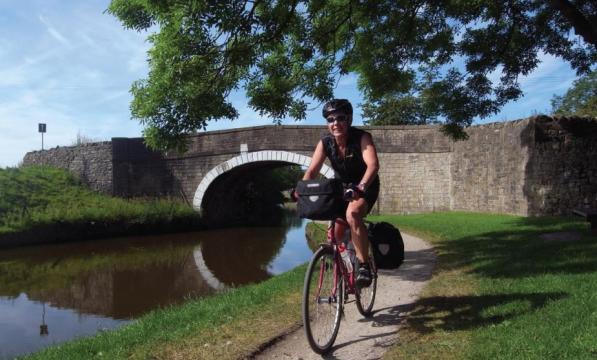Along England’s Backbone

The Pennine Cycleway runs for 355 miles along the spine of England, from Derby to Berwick-upon-Tweed on the Scottish border. Sustrans founder John Grimshaw calls it ‘the best National Cycle Network route of the lot’. That it’s hilly goes without saying, and it was the water draining off these hills that provided the power that made England the manufacturing capital of the world a couple of centuries ago. The signs of that industrial heritage are still there, particularly in the South Pennines.
The ride is not all hills, however. After we left Derby, the twelve of us followed quiet lanes to Ashbourne, then joined the first of three old railway tracks en route: the Tissington Trail. We stayed on it almost all the way to Buxton. It was a spectacular start to our journey, a gentle ride up across the roof of Derbyshire, with expansive views of the beautiful White Peak.
Later on, we’d ride two other rail trails: the Longdendale, north of Glossop; and the South Tyne, which runs from north of Alston to Haltwhistle, near Hadrian’s Wall. There were two serene canal towpath sections too. Aside from these flat bits, the Pennine Cycleway involves some hard graft. The compensation is the world-class scenery you pass through.
Peak District climbs
It’s a common misconception to think that National Cycle Network (NCN) routes are traffic-free. Most are on minor roads. The Pennine Cycleway is no exception, although there are a number of short off-road sections, in addition to the towpaths and old railway trails.
Most of these off-road sections are rideable on any bike. No so the one outside Buxton. We climbed a steep hill out of the town, then the route turned off onto a tiny tarmac lane that was even steeper. This soon disintegrated into a rough stony track that no bike other than a full-bore mountain bike could cope with. Thank goodness for the two-foot gear! Luckily, we had only a couple of hundred metres of walking before tarmac returned.


